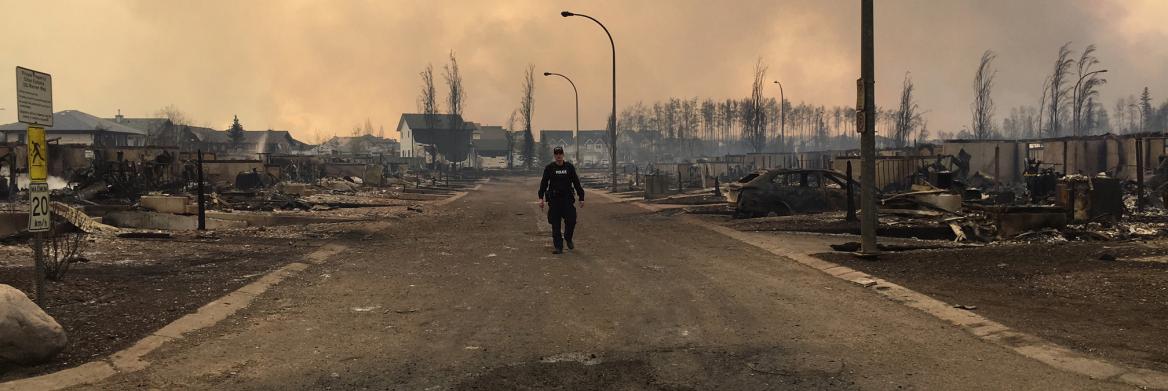I didn't see it coming. I never thought that would happen here. I can't believe it.
Comments like these are common after a critical incident or natural disaster. Even when there's some element of warning, none of us can be prepared for every aspect of the next emergency. But being ready to respond to the best of our ability is possible. If we start today.
In this issue of Gazette magazine, we look at what it takes to plan ahead, react with skill and confidence, and improve for the next unthinkable event.
For our cover story, Amelia Thatcher looks at what it took to evacuate Fort McMurray, Alta., when smoke and flames took over the city, and how key preparation beforehand helped keep responders resilient and provided order in chaos.
In the First Nation community of Chateh, Alta., a disaster training exercise payed off when, a few months later, the reserve was evacuated during a major flood. Thatcher describes how this emergency planning exercise — a first for an Alberta First Nation — helped eliminate confusion and improve self-sufficiency during the real event.
Mother Nature is a formidable force. Deidre Seiden writes about the well-co-ordinated planning and response by Canadian police when Hurricane Matthew tore through Haiti. From pre-storm communication to post-hurricane foot patrols, those serving on mission were ready to weather what came their way and act quickly in the aftermath.
No matter where it occurs — a school, an office or a place of worship — an active shooter event provides little to no time for planning. And co-ordinating an immediate response, whether it's one officer or an entire detachment, will test even the most prepared.
Learn about the RCMP's Immediate Action Rapid Deployment (IARD) training at Depot. This mandatory course teaches operational members as well as cadets how to subdue an active threat through realistic scenarios.
Responding to a school shooting involves many players. The RCMP's Operational Readiness and Response Unit in New Brunswick recently held a multi-agency exercise in an empty high school to test interoperability between front-line responders. The scenario allowed everyone to practise, debrief and discuss how to improve.
As a police force, our place of work can become a target for violence. RCMP in Quebec have created a video and other tools to prepare operational police and civilian employees for what to do if a shooter enters their building. Not surprisingly, IARD and employee awareness feature prominently.
You can also read about emergency planning in vulnerable populations, co-ordinating pet and livestock evacuation, maintaining mental health during an emergency, and crisis communications.
Few want to think about preparing for these incidents, but as one RCMP officer in IARD training points out, "we have to think about it — because it's our job."
